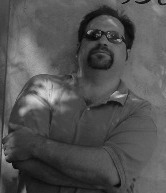 |
|
|
|
|
| 
On September 8, 1999, a thirty-two-year-old Los Angeles police officer named Rafael Perez, who had been caught stealing a million dollars' worth of cocaine from police evidence-storage facilities, signed a plea bargain in which he promised to help uncover corruption within the Los Angeles Police Department. Perez hinted at a scandal that could involve perhaps five other officers, including a sergeant. Later, Perez began to talk about a different magnitude of corruption -- wrongdoing that he claimed was endemic to special police units such as the one on which he worked, combating gangs in the city's dangerous Rampart district. Perez declared that bogus arrests, perjured testimony, and the planting of "drop guns" on unarmed civilians were commonplace. Perez's story unfolded over a period of months, and ignited what came to be known as the Rampart scandal, which the Los Angeles Times called "the worst corruption scandal in L.A.P.D. history." Eventually, Perez implicated about seventy officers in wrongdoing, and the questions he raised about police procedure cast the city's criminal-justice system into a state of tumult. More than a hundred convictions were thrown out, and thousands more are still being investigated. The city attorney's office estimated the potential cost of settling civil suits touched off by the Rampart scandal at a hundred and twenty-five million dollars. A city councilman, Joel Wachs, said that it "may well be the worst man-made disaster this city has ever faced." The Rampart scandal finally broke the L.A.P.D. in a way that even the Rodney King beating, in 1991, and its bloody aftermath had not...(continue: read the full article on The New Yorker web site.) |
Click Here to go to where I found the above on the web

0 Comments:
Post a Comment
<< Home